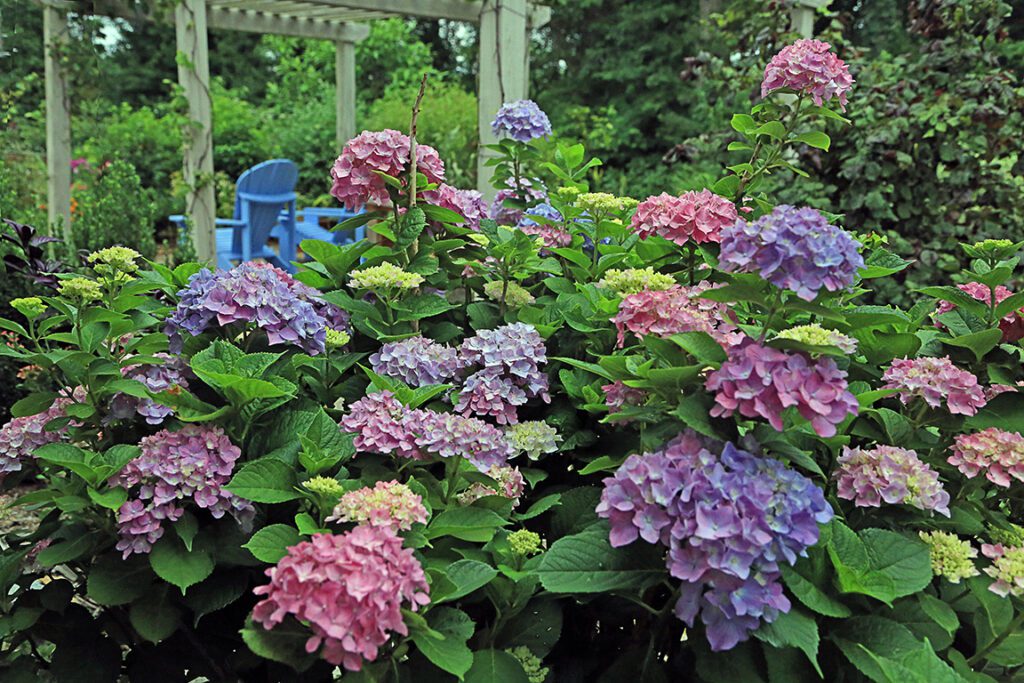Hydrangea Flower Color
Hydrangea Flower Color
You say that you have pink hydrangeas and you really want blue? Perhaps you have a hankering to have a shrub with pink and blue flowers on the same plant, or maybe you’re wondering if your white flowering hydrangea can be turned another color. Here are some tips and truths about hydrangea color.
- Not all hydrangeas will change the color of their flowers. White Hydrangea paniculata (aka PeeGee hydrangeas) can’t be turned blue, for example, even though they fade to pink later in the fall.
- Although most varieties of Hydrangea macrophylla can be made pink or blue, some varieties are more stable and respond less to changes in soil pH.
- Hydrangea flowers (both mop head and lace cap varieties) turn blue when they are grown in acidic soil. This pH allows the plant to take up aluminum from the soil and this turns the flower blue. To keep flowers pink the pH must be alkaline. In the northeast, where soils are commonly on the acid side, most hydrangeas will need to be limed in spring and fall to keep them pink. On Cape Cod your hydrangeas should be naturally blue unless regular applications of lime to a lawn have made the soil alkaline.
- The depth of the color of a hydrangea flower is genetically determined. So Endless Summer plant will have either light blue or light pink flowers, not deep blue or purple. If you want a dark shade, buy one of the plants that has darker flowers.
- If you need to acidify your soil using sulfur is more gentle than aluminum sulfate. If you use aluminum sulfate be sure to mix it at the recommended rate and water it in well, only applying to the soil after the plant has been well watered. Too much aluminum sulfate will create a false looking “swimming pool blue” and can damage or even kill the plant.
- For a shrub with blue and pink flowers on the same plant apply lime regularly over only a partof the root system, and sulfur over the other sections. Do this by mentally dividing the area under the shrub’s drip-line into quarters and applying the lime or sulfur in the same quarter each time. (You might want to mark which area is which with a plastic garden label so you remember where you’re placing each product!)

3 Comments
Leave a Comment
Subscribe To Our Newsletter
Sign up for our weekly email about sales and events.

Hi, Country Gardeners!!
Just to let you know, I LOVE your newsletters! This one is especially informative (about caring for Hydrangeas and modifying color production). Your information is always great and current with the growing season.
Keep up the good work!
Happy rest of the summer!
Shelly Stirling :^)
Thanks, Shelly! That means a great deal to us.
Oh how I wish I come to the Cape every week. My parents have passed away and we sold their home. I was a frequent visitor of your nursery. I truly look forward to these newsletters. They are a fountain of information. Thank you so much for all your efforts.